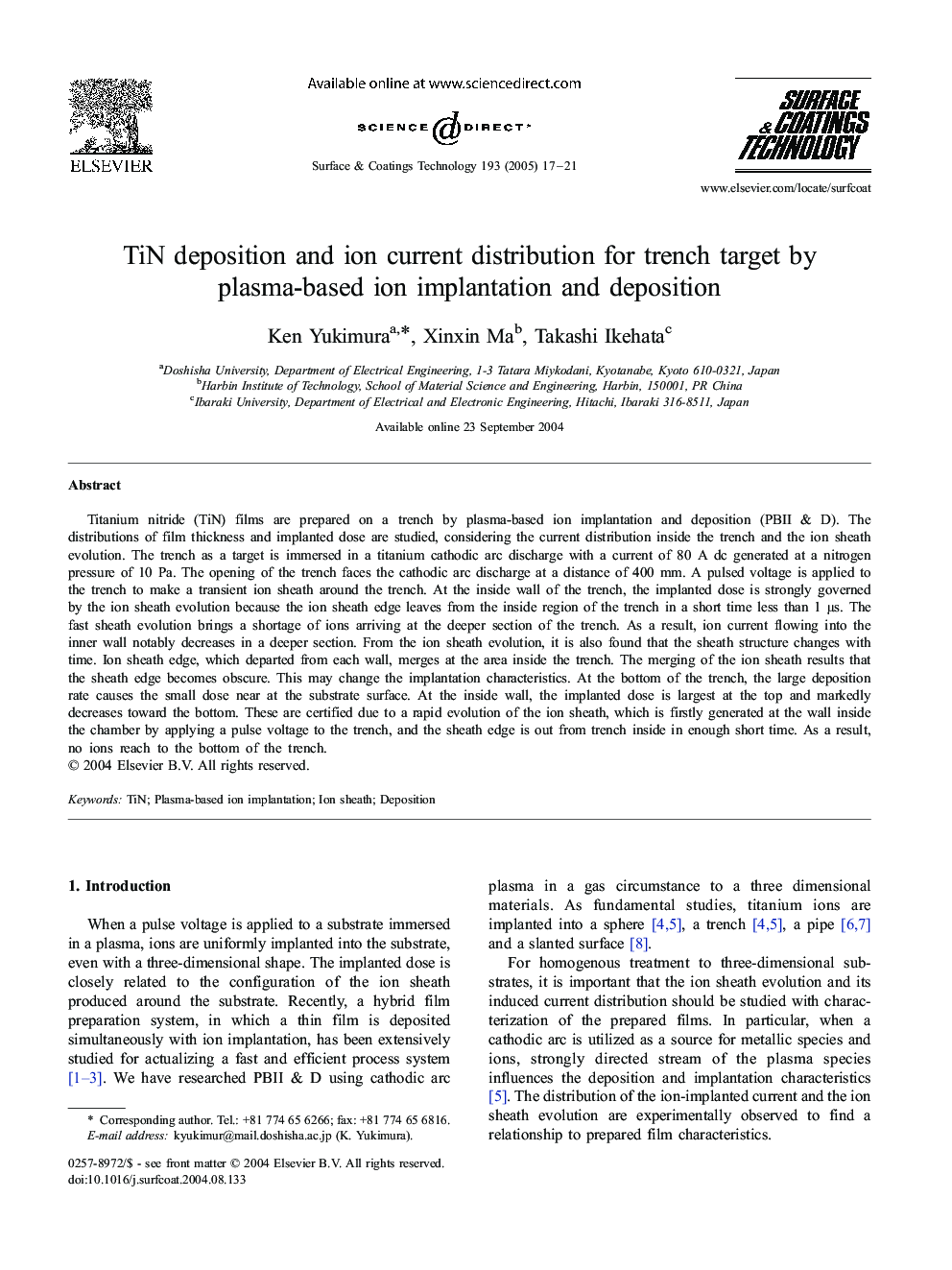| Article ID | Journal | Published Year | Pages | File Type |
|---|---|---|---|---|
| 9809801 | Surface and Coatings Technology | 2005 | 5 Pages |
Abstract
Titanium nitride (TiN) films are prepared on a trench by plasma-based ion implantation and deposition (PBII & D). The distributions of film thickness and implanted dose are studied, considering the current distribution inside the trench and the ion sheath evolution. The trench as a target is immersed in a titanium cathodic arc discharge with a current of 80 A dc generated at a nitrogen pressure of 10 Pa. The opening of the trench faces the cathodic arc discharge at a distance of 400 mm. A pulsed voltage is applied to the trench to make a transient ion sheath around the trench. At the inside wall of the trench, the implanted dose is strongly governed by the ion sheath evolution because the ion sheath edge leaves from the inside region of the trench in a short time less than 1 μs. The fast sheath evolution brings a shortage of ions arriving at the deeper section of the trench. As a result, ion current flowing into the inner wall notably decreases in a deeper section. From the ion sheath evolution, it is also found that the sheath structure changes with time. Ion sheath edge, which departed from each wall, merges at the area inside the trench. The merging of the ion sheath results that the sheath edge becomes obscure. This may change the implantation characteristics. At the bottom of the trench, the large deposition rate causes the small dose near at the substrate surface. At the inside wall, the implanted dose is largest at the top and markedly decreases toward the bottom. These are certified due to a rapid evolution of the ion sheath, which is firstly generated at the wall inside the chamber by applying a pulse voltage to the trench, and the sheath edge is out from trench inside in enough short time. As a result, no ions reach to the bottom of the trench.
Related Topics
Physical Sciences and Engineering
Materials Science
Nanotechnology
Authors
Ken Yukimura, Xinxin Ma, Takashi Ikehata,
